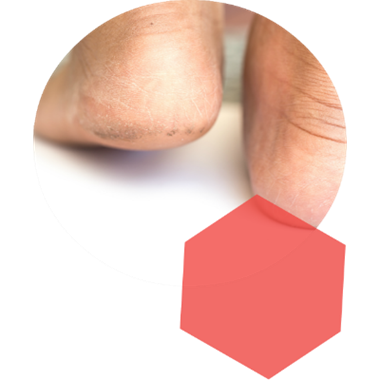Your skin is like a human shield; it protects you from dirt and infections. But it can’t protect you properly if it’s injured. Cracked skin is one such ailment. It’s painful, and not the most aesthetically-pleasing thing in the world!
Cracked skin results from tiny splits that occur in dry, damaged skin.
If left untreated, these tears can grow into deeper cracks; also known as fissures. A common area for cracks to appear is the heel as it carries the weight of the body whenever you stand. This could be because of dry skin that has built up. Without regular removal of dry skin and a lack of moisture, cracked heels could appear more often.
Symptoms
In the initial stage of the condition, the heel starts to feel tight when placed under any kind of strain. Intense dryness, itching and tenderness of the skin are often the first signals of the problem.
The affected area can turn yellow or brown in color and tends to harden significantly.
In its more advanced stage, the heel may become so dry that it turns white, yellowish or red in color and begins to flake. Cracks can deepen to the extent that the simple act of walking becomes incredibly difficult. If left untreated, cracked heels may start to bleed and become infected with bacteria.
Causes
Dehydrated skin is one of the biggest causes of cracked skin. Once moisture is lost, the heel starts to produce thick areas of rough skin as a form of protection. As a result, the skin is prevented from healing sufficiently. At the beginning cracked skin may only feel like a light bother, but over time it will become more painful to walk on if not treated immediately. In more advanced stages cracked heels can feel itchy, painful and also begin to bleed from pressure.
Calluses are another major culprit of rough skin. These are patches of yellowish thick, dry skin that grow over injured areas of the skin in order to protect it. If left untreated, Calluses often split under pressure. Open-back shoes are a major culprit when it comes to Calluses; as they don’t provide any support for the pad of the foot. Barefoot walking and uncomfortable shoes also worsen the problem. Dehydration, the use of harsh soaps and vigorous scrubbing of skin all contribute to the problem.
Other factors for the occurrence of dry skin include: a lack of minerals and vitamins such as iron, obesity, diabetes, and hypothyroidism. Chronic skin conditions like psoriasis can also cause dehydrated skin. Other reasons include: dry indoor heating, exposure to cold weather and problems with pronation of the foot.
Treatment
An effective way to prevent the formation of cracked skin is through the use of a moisturizer. Amopé Pedi Perfect™ Daily Moisturizer can help hydrate and soften cracked heels by improving the skin’s elasticity. Apply the cream twice a day to clean, towel-dried skin by massaging it into feet until it’s completely absorbed. Another essential tool in the fight against hard skin is a foot file, such as the Amopé Pedi Perfect™ Electronic Foot File with Diamond Crystals, which can buff away hard skin by removing it until smoother, softer skin is revealed.
When it comes to cracked skin, taking care of your feet regularly is always better than letting your cracked skin get worse. It’s important that you give your feet the same care and attention that you’d give the rest of your body. If you’re always pressed for time, soften hard skin quickly by soaking your feet in warm water. Remember to wear shoes that protect and support the pad of the foot and avoid shoes that are too loose or tight.



